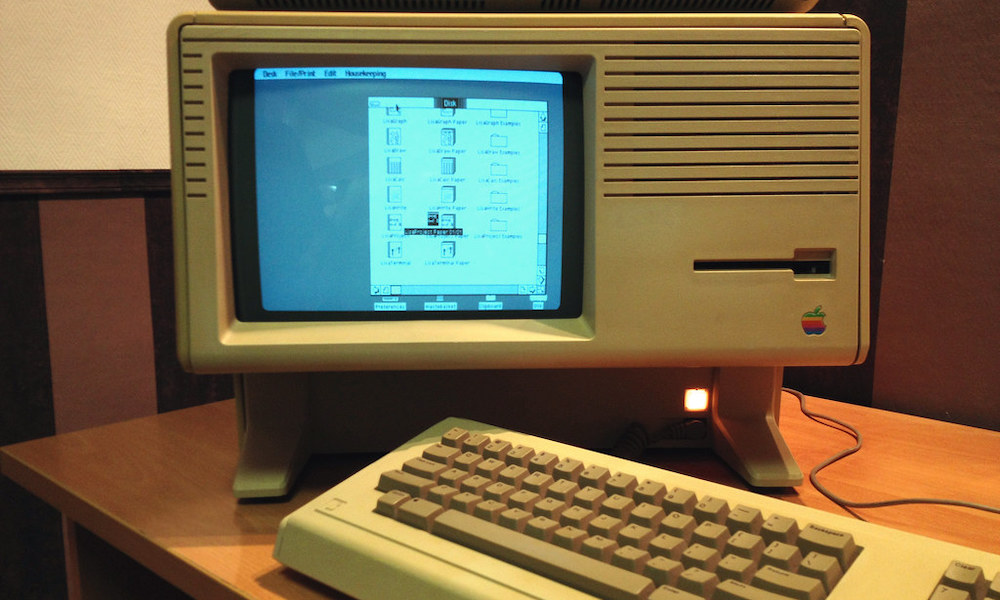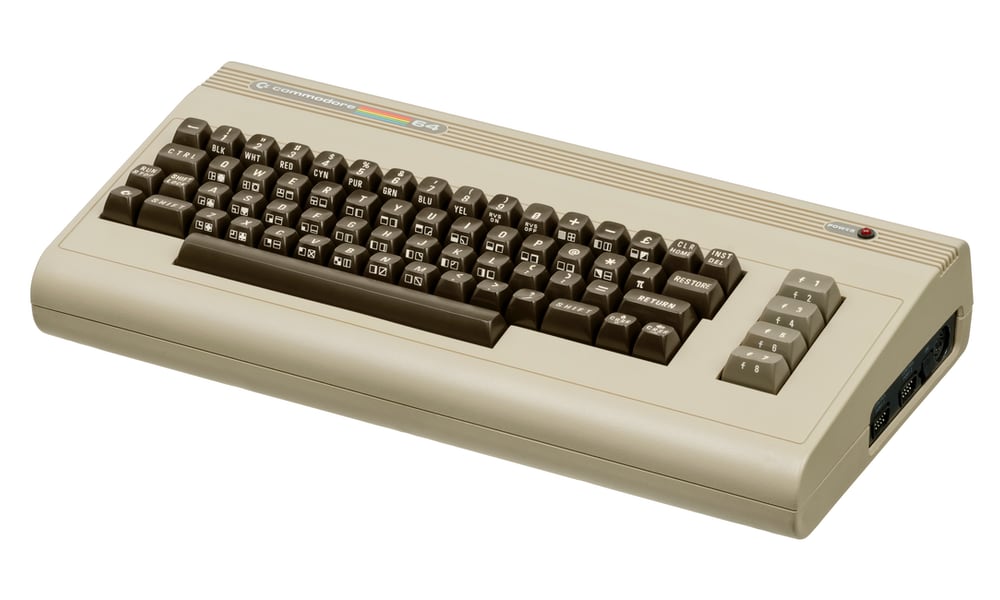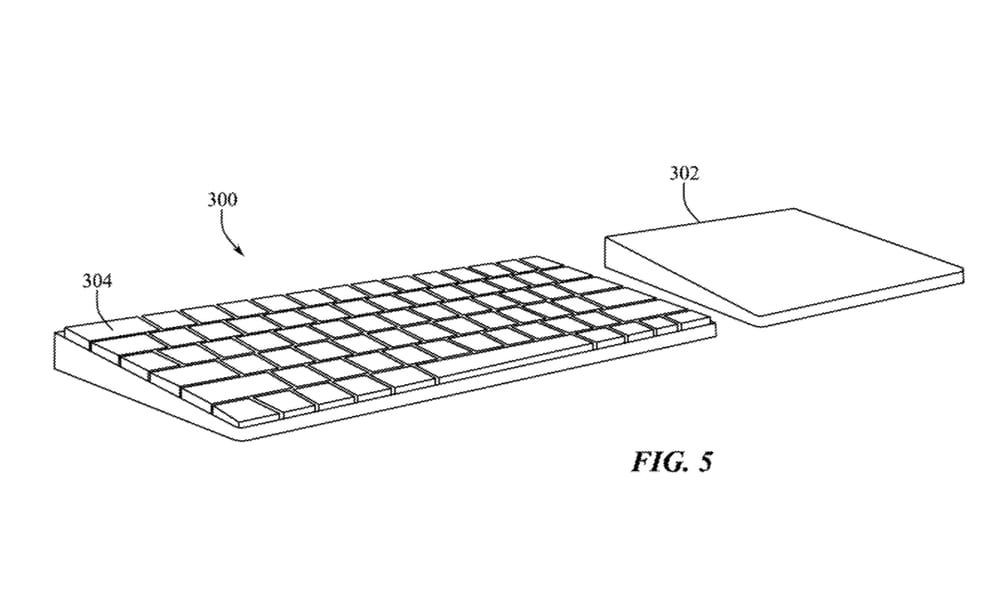Latest Apple Patent Reveals Cool New Throwback ‘Mac-in-a-Keyboard’ Design
 Credit: Jay Wennington / Unsplash
Credit: Jay Wennington / Unsplash
Toggle Dark Mode
With today’s large-screened iMacs and portable MacBooks, it’s hard to believe that there was a time when it was perfectly normal for an entire computer to be embedded in a keyboard, but now it looks like Apple is considering a return to those halcyon days of bedroom computing.
A new Apple patent unearthed by AppleInsider envisions a day when Apple’s Magic Keyboard could become an entire Mac.
It’s not as strange of an idea as it sounds, either. While most Macs do come with a screen these days, over a decade ago Apple introduced the Mac mini as a way to get a foothold into more people’s lives. You had to bring your own keyboard, display, and mouse, but the tradeoff was that it was only $499 in an era when the most affordable Mac otherwise sold for well over the thousand-dollar mark.
It was a product clearly aimed at “switchers” — Apple wanted to lure people over from Windows — so the need to supply your own peripherals wasn’t a show-stopper, either. In fact, it was very common in that era for PC users to upgrade only their main unit, and the idea of the Mac fit right into that. After all, why try to sell customers something that they already have?
It largely worked, too. With the iPod providing a “halo effect” for Apple and the Mac mini acting as an affordable entryway, it enticed many people to give the Apple ecosystem a closer look (including me).
Mac mini Redux
Even though the Mac mini still exists today, it’s probably fair to say that its primary intent has moved well past the days of luring in Windows users.
After all, today you can get a MacBook Air for not much more, and most folks would find that jump worth it. Instead, the modern Mac mini finds its place mostly in server rooms and professional production environments, where its low-profile design fits in perfectly.
That doesn’t mean that there still isn’t room for Apple to provide a more affordable Mac for families on a budget who just want something simple to use at home, and in doing so, it’s taking a page out of the home computers of the early 1980s.
Before IBM came along with the boxy concept of the IBM Personal Computer (PC), it was actually the norm for computers to come as single-piece units with the keyboard, processors, and memory all in a single enclosure.
Home computers were also designed to be connected to an ordinary television set, so there was no need to include a monitor. It wasn’t until the first Macintosh came along in 1984 that the idea of a computer with a built-in monitor really started to gain traction.
Even the early Apple computers followed this design. The Apple III was the first to adopt a built-in monochrome monitor, but this wasn’t a home computer, but rather targeted at businesses. Meanwhile, Apple’s Lisa was developed in parallel to attempt to capture the home market. Both of these products were complete flops, however.
The most popular home computer of that era was indisputably the Commodore 64, which actually holds the world record for the best-selling single computer model of all time. Of course, unlike modern computers, there was only one model of C-64, so that probably wasn’t too hard. It was a successor to the company’s VIC-20 and Commodore PET, the latter of which became a very popular choice in schools, which may have also helped to drive sales of the C-64 to more families.
The specs on those early computers were of course laughable by today’s standards. The insanely popular C-64 had only 64KB of RAM (yes, that’s a “K” not an “M” or a “G”), and no internal storage. Instead, you had to add a big floppy disk drive or tape cassette drive to save data or load programs. Software applications could also be run from a cartridge inserted into a slot in the keyboard unit, but this was only good for running programs, usually games.
So, needless to say, an Apple Magic Keyboard Mac would be so far beyond that as to be an entirely revolutionary idea, since it’s likely that you wouldn’t require any external devices at all.
Sure, it would likely include USB-C ports for charging and connecting optional peripherals, but if Apple can pack a terabyte of storage, desktop-class CPUs, and cellular and Wi-Fi hardware into an iPhone, it stands to reason that it can do the same with a keyboard.
While you’ll obviously need a display and mouse, both of which can be connected over USB-C, it’s also not hard to imagine a completely wireless configuration, where a mouse or trackpad is connected via Bluetooth, and the display via AirPlay. After all, almost every modern smart TV packs in AirPlay 2 support now, which means countless families have at least one compatible display in their homes already.
This device configuration can allow a user to carry a single computing device that can provide a desktop computing experience at any location having one or more computer monitors.Apple patent application
The patent actually gets quite imaginative, and it clearly envisions this device as something that could go well beyond home use. For example, it could include a cellular antenna for 5G connectivity, and be “foldable about an axis.”
Such an idea isn’t without some challenges, of course, and the patent application spends quite a bit of time talking about ways to ventilate the keyboard to keep the internal components cool. Apple’s M1 chips may run cooler than their Intel predecessors, but they still generate heat that has to be dealt with somehow.
While all of this is quite interesting, as with every Apple patent application, it comes with the usual disclaimers. Apple patents many different ideas, and not all of them see the light of day. Still, this one is something we could see Apple doing, especially if it can offer it for substantially less than a MacBook Air.











